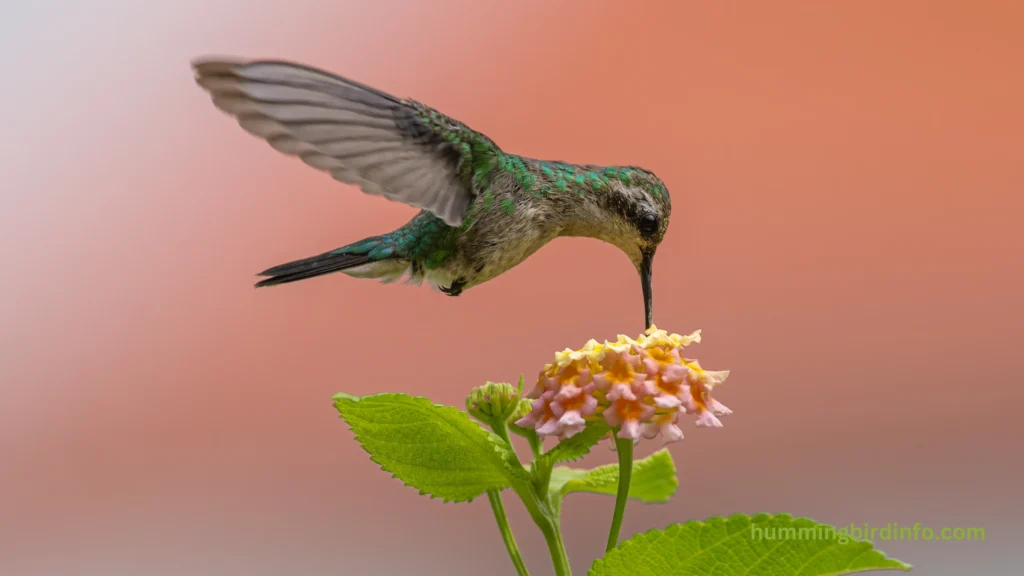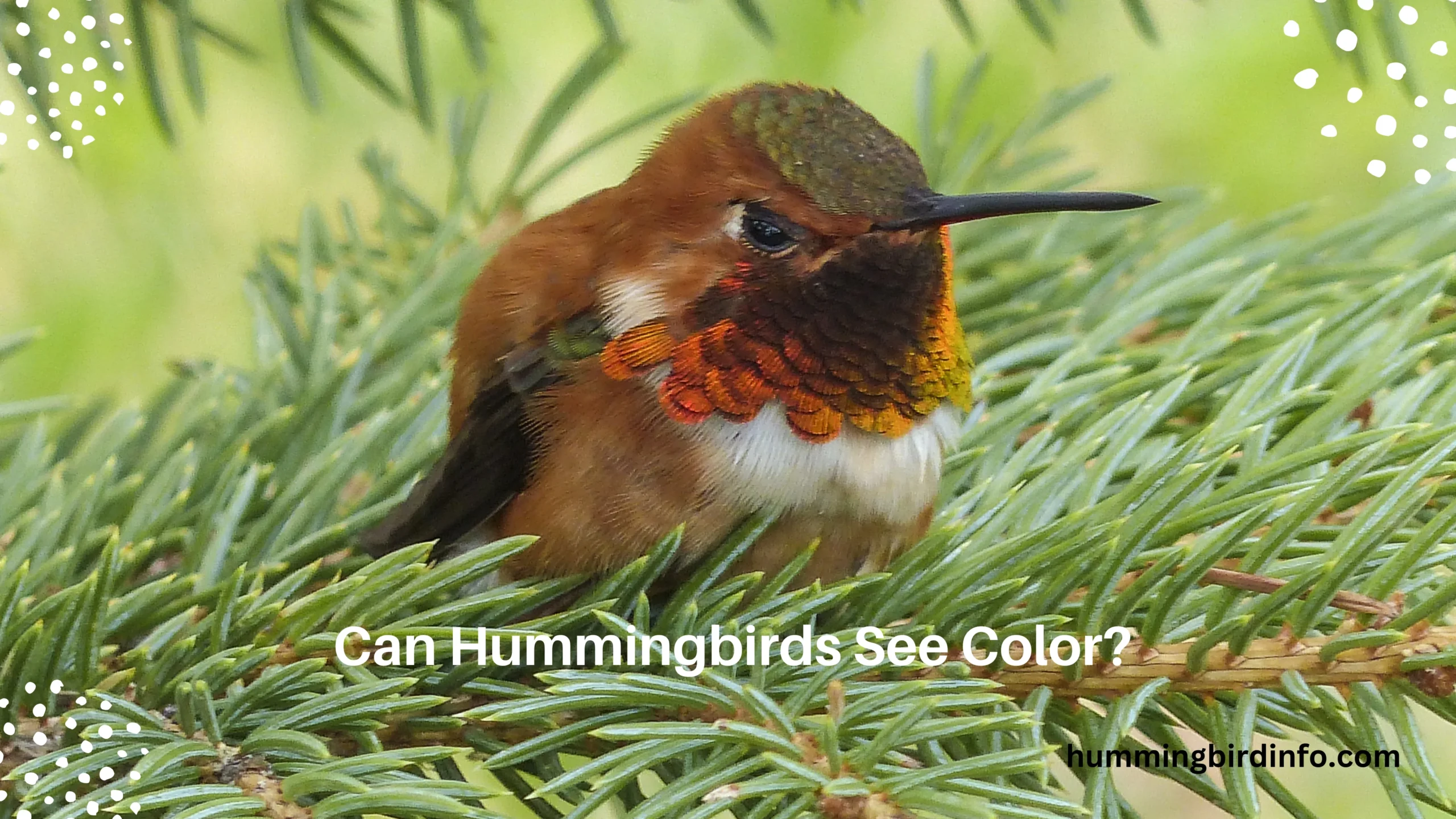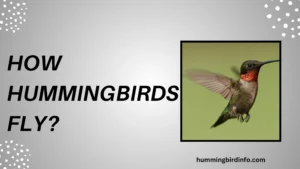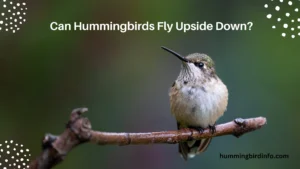Hummingbirds are a marvel of nature, captivating us with their vibrant colors and exceptional agility. Their tiny bodies seem to defy the laws of physics as they hover, dart, and fly in any direction.
But what truly sets these birds apart isn’t just their speed; it’s their ability to perceive colors in ways that humans can’t even imagine. While we are limited to seeing a spectrum of colors from red to violet, hummingbirds have a unique visual system that opens up an entirely different world.
So, can hummingbirds see more colors than we can? The answer is yes – they possess a much more complex color vision system.
This fascinating ability gives them a distinct advantage in their daily lives, whether it’s in foraging, mate selection, or navigating their environment. But how exactly do these tiny creatures experience color, and what does this mean for their survival?
In this article, we will explore the science behind hummingbird color perception, the specific adaptations of their eyes, and the implications of their vibrant visual world.
Understanding the significance of this superpower goes beyond simple curiosity.
It provides insight into the evolutionary relationship between hummingbirds and the plants they pollinate, highlighting a critical aspect of their ecological role. Join us as we delve into the colorful world that hummingbirds see, and how their unique vision helps them thrive in their environment.
Contents
- 1 The Basics of Color Vision
- 2 Hummingbird Eyes – Adapted for a Colorful World
- 3 The Science Behind Hummingbird Color Vision Research
- 4 The Implications of Enhanced Color Vision
- 5 Conclusion
- 6 FAQs
- 7 1. Can hummingbirds see ultraviolet light?
- 8 2. How many types of cone cells do hummingbirds have?
- 9 3. Why are hummingbirds attracted to red flowers?
- 10 4. How does UV light help hummingbirds in foraging?
- 11 5. Do hummingbirds see color the same way humans do?
- 12 6. How does enhanced color vision help hummingbirds avoid predators?
The Basics of Color Vision
The electromagnetic spectrum defines the range of light visible to different species. Light’s wavelengths determine the colors we perceive, with human eyes able to detect only a small portion of this spectrum.
Humans rely on three types of cone cells in the retina, each sensitive to a different wavelength: red, green, and blue. This trichromatic system allows us to experience the world in a blend of these colors.
In contrast, birds, including hummingbirds, possess a fourth type of cone cell sensitive to ultraviolet (UV) light, making them tetrachromatic. This means they can see colors beyond the visible spectrum, perceiving hues invisible to the human eye.
With this added UV cone, hummingbirds gain an expanded visual range, allowing them to detect patterns on flowers that are critical for finding nectar.
This expanded vision also enables hummingbirds to see what humans would call “non-spectral” colors.
These colors emerge when wavelengths combine in ways that humans cannot fully comprehend, thanks to the UV sensitivity of their eyes. So, the colors hummingbirds see are far richer and more complex than the rainbow we experience.
Hummingbird Eyes – Adapted for a Colorful World
Hummingbird eyes are fine-tuned for exceptional color vision. With their tetrachromatic sight, they can see the full spectrum of visible light and the ultraviolet spectrum. This gives them the ability to detect flowers that have evolved to reflect UV light, an adaptation that helps them locate nectar-rich flowers efficiently.
In addition to their UV sensitivity, hummingbird eyes have a specialized structure. They are capable of discerning the tiniest variations in color, especially in the red and UV ranges.
This means the flowers that appear plain to us might be breathtakingly vibrant to a hummingbird. Some flowers even have UV patterns that act as “nectar guides,” directing hummingbirds straight to their food source.
As for red flowers, hummingbirds have a distinct attraction to them, which is no coincidence. Over time, evolution has shaped a close relationship between red flowers and hummingbirds, allowing them to thrive in environments where red blooms are common.
But while we might see a flower as simply red, the hummingbird’s perception of the same flower is far more complex and layered.
The Science Behind Hummingbird Color Vision Research
Research into avian color vision has unveiled the extraordinary capabilities of hummingbirds. Early studies showed that birds could detect UV light, leading scientists to further investigate this ability in hummingbirds.

Through spectrophotometry, researchers measure the wavelengths of light reflected by flowers and feathers, revealing how hummingbirds distinguish between various color signals.
Modern research also utilizes behavioral experiments, training hummingbirds to associate specific colors with rewards.
This method has provided fascinating insights into their ability to differentiate between subtle color variations and perceive hues in the UV spectrum. Furthermore, electrophysiology, which measures the electrical responses in hummingbird retinas, helps scientists understand how these birds process color information.
Key findings have shown that hummingbirds don’t just see UV light; they can perceive non-spectral colors created by UV plus red or UV plus green, broadening their color palette and enhancing their flower selection capabilities.
The Implications of Enhanced Color Vision
Enhanced color vision is not just a fascinating biological trait; it plays a crucial role in hummingbird survival. Foraging is one area where this ability stands out.
Hummingbirds can easily spot UV-reflecting flowers and distinguish between flower species, making them highly efficient nectar gatherers.
In terms of mate selection, color plays a significant role. Male hummingbirds with vibrant UV-reflecting plumage may catch the eye of females, signaling their health and fitness.
Additionally, colorful displays may serve as communication tools during courtship rituals, further emphasizing the role of color vision in their social interactions.
Beyond finding food and mates, enhanced color vision also aids in predator avoidance. By detecting subtle color shifts in their surroundings, hummingbirds can spot potential threats more easily.
The co-evolution between hummingbirds and the flowers they pollinate is also driven by this exceptional visual capacity, as flower species adapt their colors and patterns to attract their feathered pollinators.
Conclusion
Hummingbirds’ ability to see a world beyond our sight is nothing short of extraordinary. Their tetrachromatic vision allows them to experience a spectrum of colors and patterns that humans can’t even fathom.
From distinguishing between UV-reflecting flowers to selecting mates, their enhanced color vision is crucial for their survival and ecological role.
This ability not only defines the way hummingbirds interact with the world around them, but it also reveals a deeper understanding of animal perception.
As we continue to explore and study these tiny creatures, we uncover new insights into the complexity of nature and the wonders that lie beyond the human visual experience.
FAQs
1. Can hummingbirds see ultraviolet light?
Yes, hummingbirds can see ultraviolet light, which is invisible to humans. This ability allows them to detect UV patterns on flowers, guiding them to nectar.
2. How many types of cone cells do hummingbirds have?
Hummingbirds have four types of cone cells, making them tetrachromatic. This includes a cone that is sensitive to ultraviolet light.
3. Why are hummingbirds attracted to red flowers?
Hummingbirds are naturally drawn to red flowers, as they are often rich in nectar. Evolution has shaped this preference for red, making it a key food source.
4. How does UV light help hummingbirds in foraging?
UV light helps hummingbirds spot UV-reflecting flowers that may be hard for humans to see, guiding them to nectar-rich sources that are crucial for their diet.
5. Do hummingbirds see color the same way humans do?
No, hummingbirds see a broader range of colors, including ultraviolet and non-spectral combinations like UV+red.
6. How does enhanced color vision help hummingbirds avoid predators?
Their ability to detect subtle color differences allows them to spot potential predators or threats more easily in their environment.








